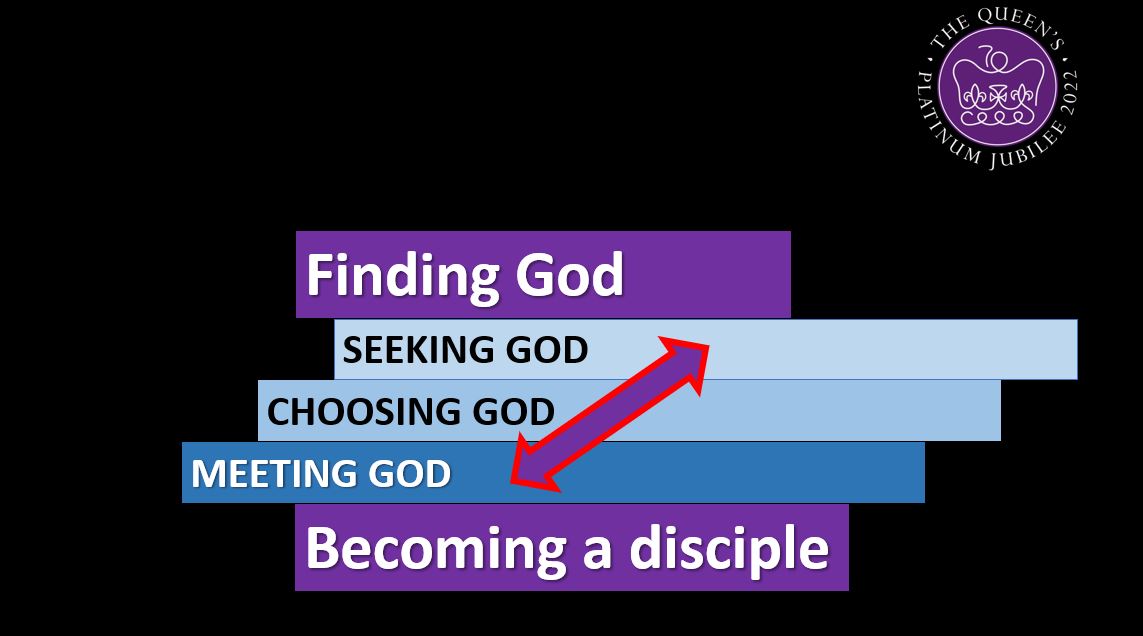Platinum Jubilee Path
During 2022 the nation celebrated the Queen's Platinum Jubilee.
Wetheral Parish Church marked The Platinum Jubilee by adding to the Historical Interpretation Board, planting some new trees for the Queen's Canopy, a wildflower nature area, a new song written for the Eden Wild Goose Community Choir by our leader Jerry King and a beautiful path from the Memorial Lychgate to the church.
This page is the story of the Platinum Jubilee Path, designed and laid by
Paul Grout - Church Architect,
Pip Hall and Wayne Hart – sculptors,
Lily Hopkins and Rosamond Lane and the Diocesan Advisory Committee,
Helen Squires of the Cumbria Waste Management Environment Trust for the funding along with Susan Holmes and family, Charles and Diana Hanson and Graham Petrie,
Graeme Skinner - original design and words,
Jon Thompson – contractor,
and several others in the community supported the idea that had been agreed with the Wetheral Parochial Church Council.
The path was commissioned on Sunday 4th December 2022 with a 40-minute talk by Graeme Skinner and contributions from Pip Hall and Susan Holmes. Some members of the Eden Wild Goose Community Choir also led us in singing our song for The Queen, Platinum Light.
The full commissioning talk with PowerPoint and audio recording (40 mins)
An audio recording of the talk
The PowerPoint alone
The Platinum Light song by Jerry King
Photo story
Pip Hall Sculptor, Paul Grout Architect, Jon Thompson Contractor
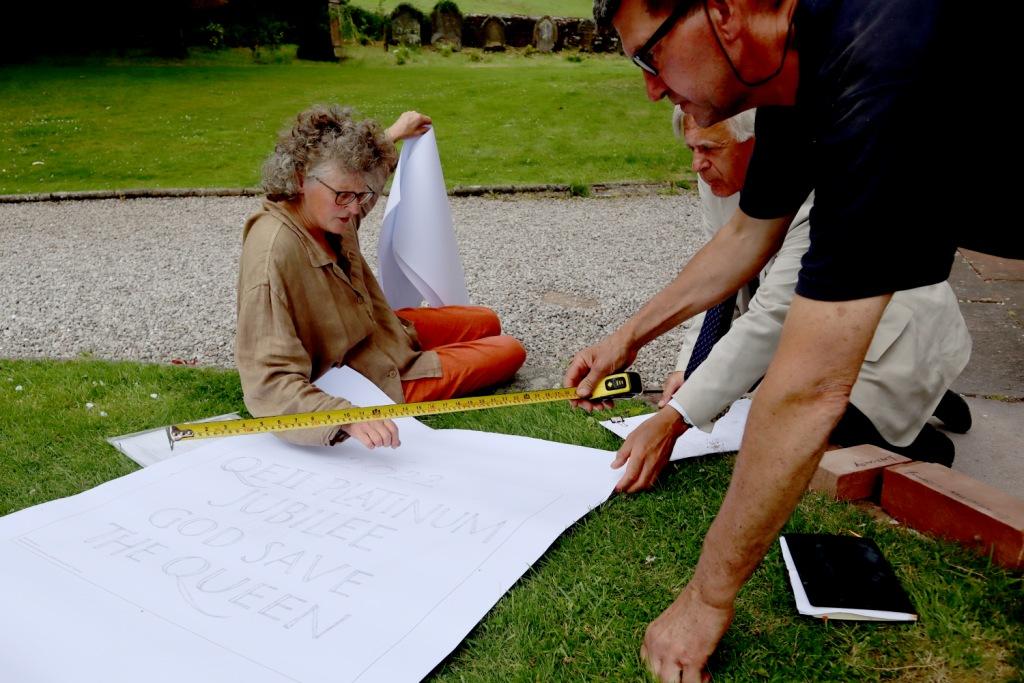
Paul Grout, Jon Thompson, Graeme Skinner
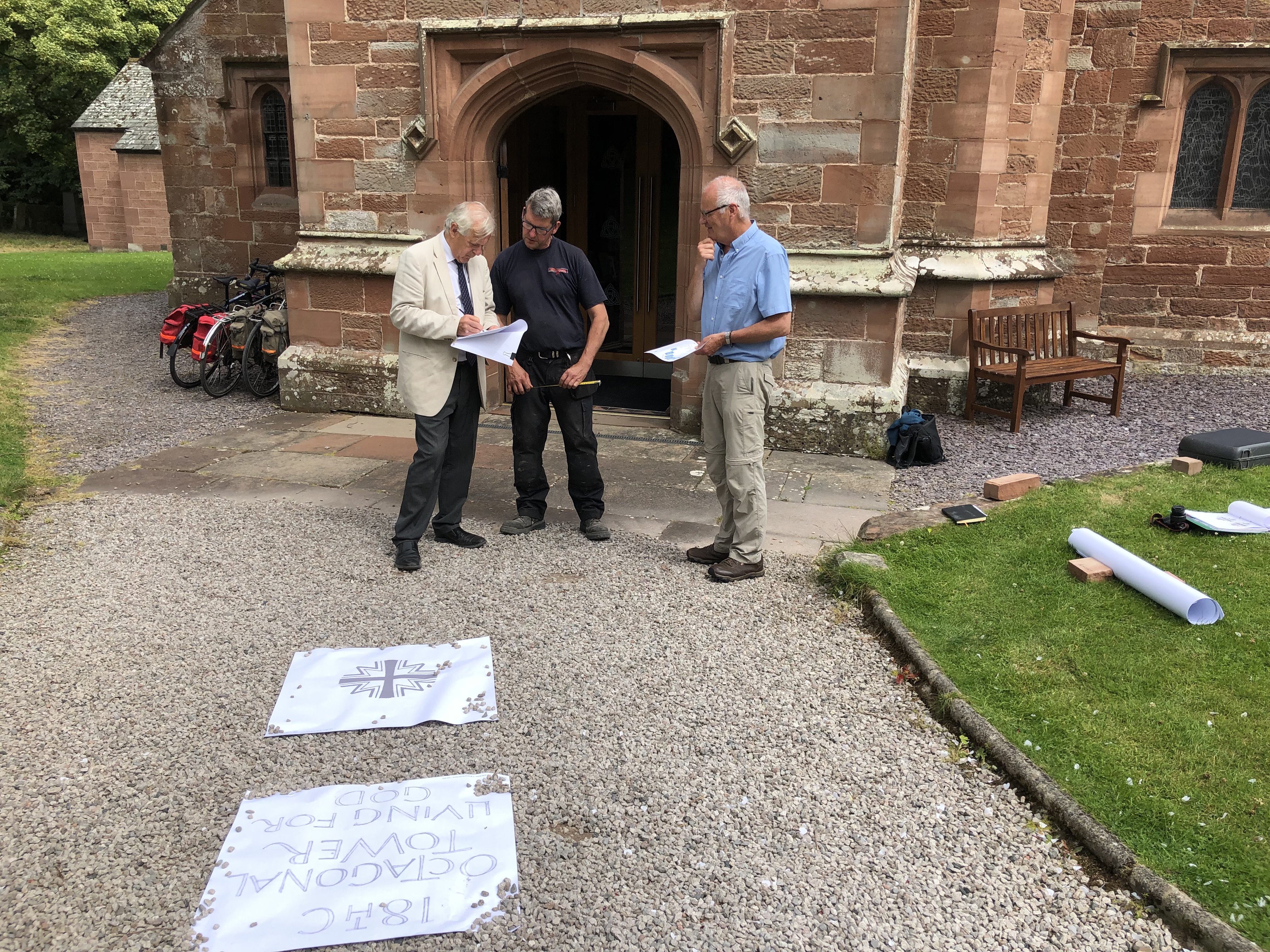
Wayne Hart
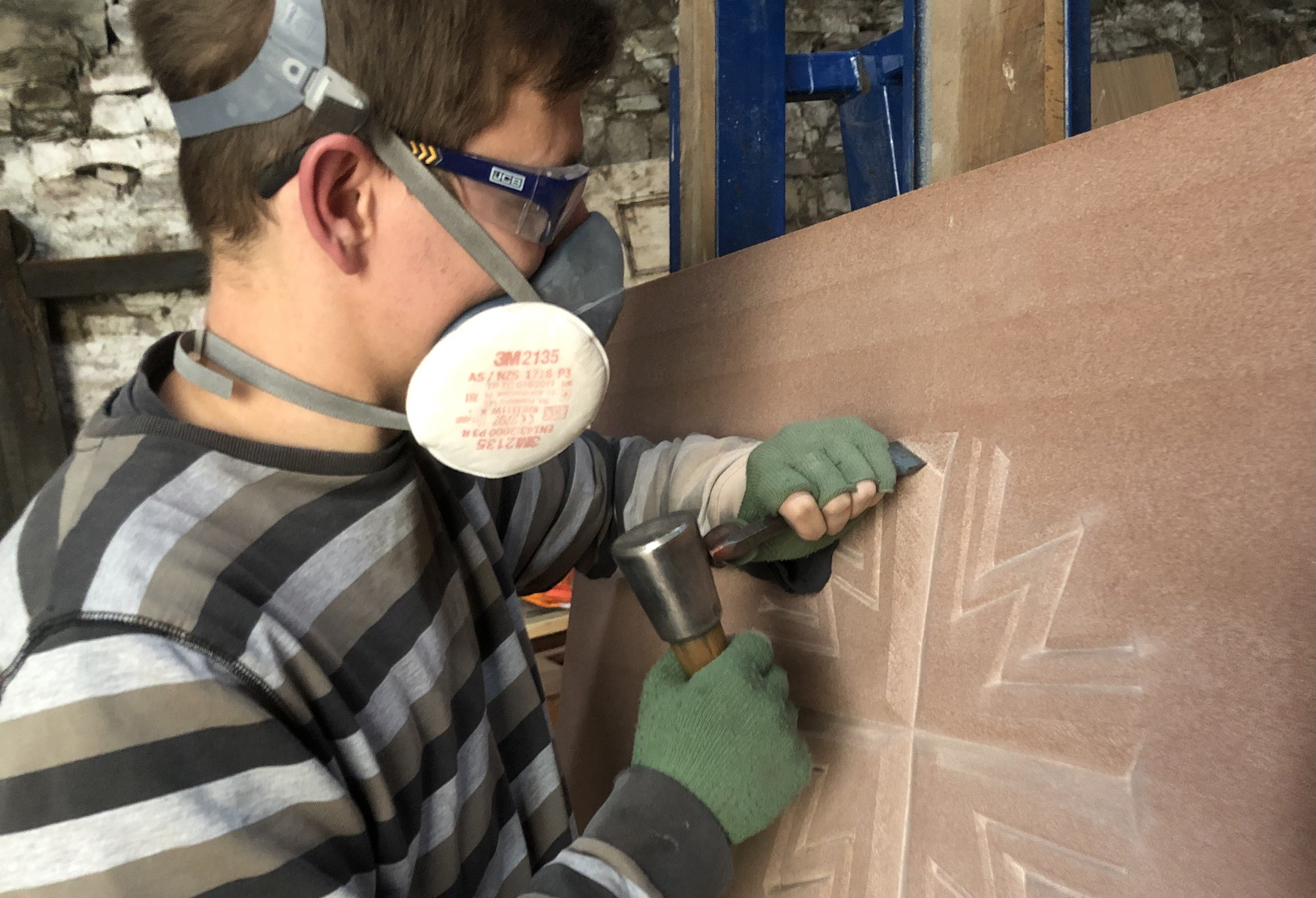
Running through the middle of the stone chip gravel the solid path offers better accessibility to the church from the village
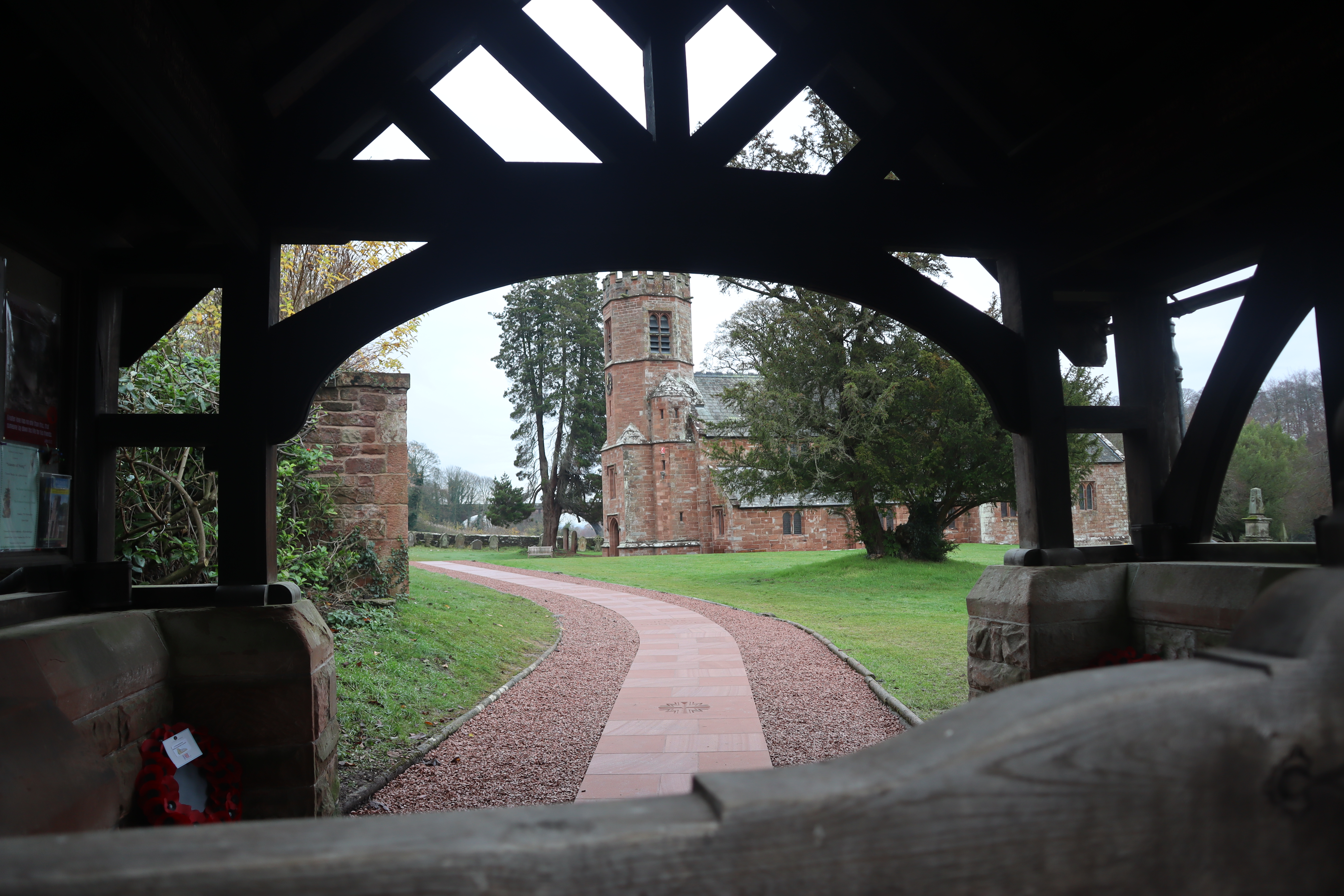

Commissioning Day - The message on one of the stones
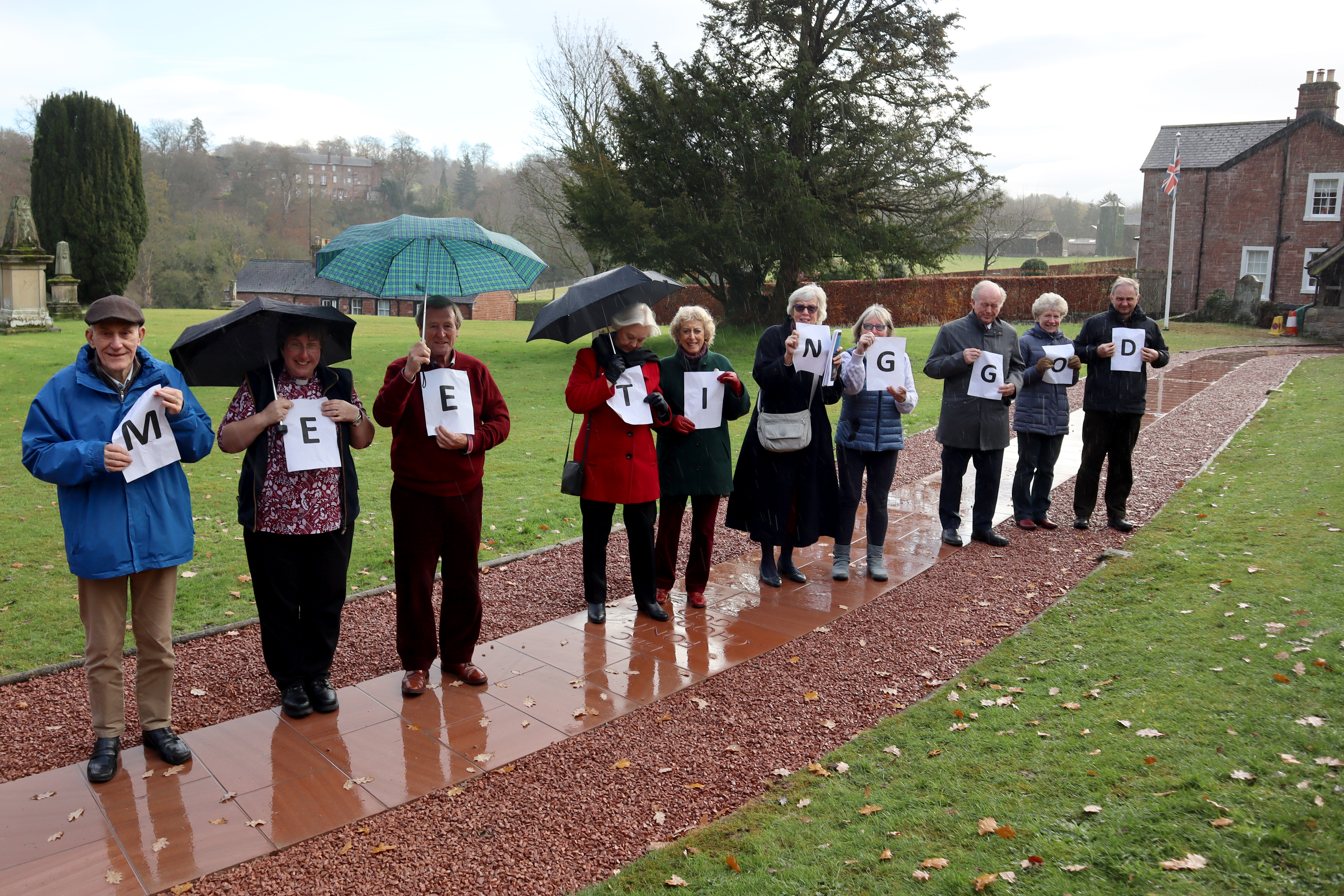
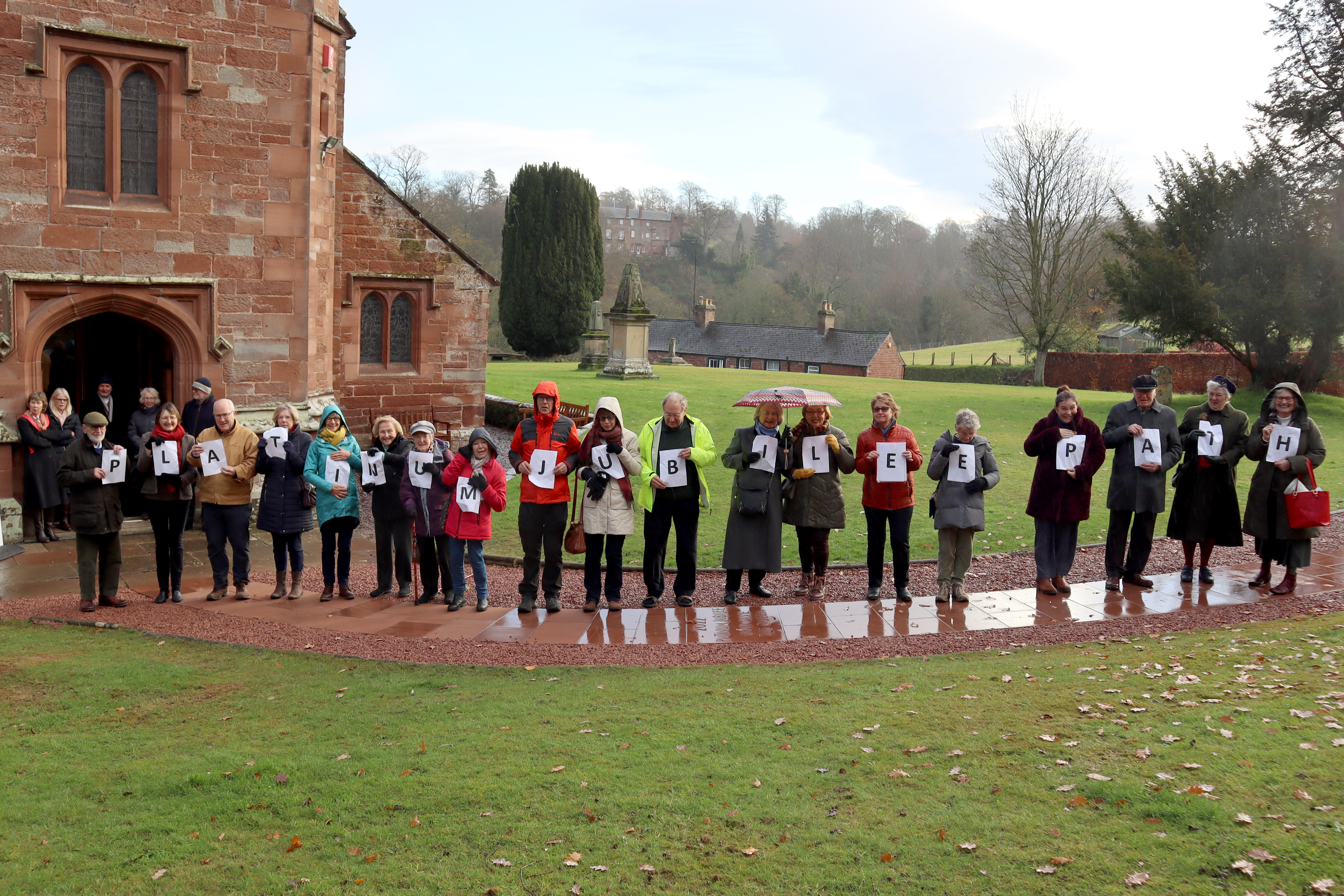
The Wetheral Star
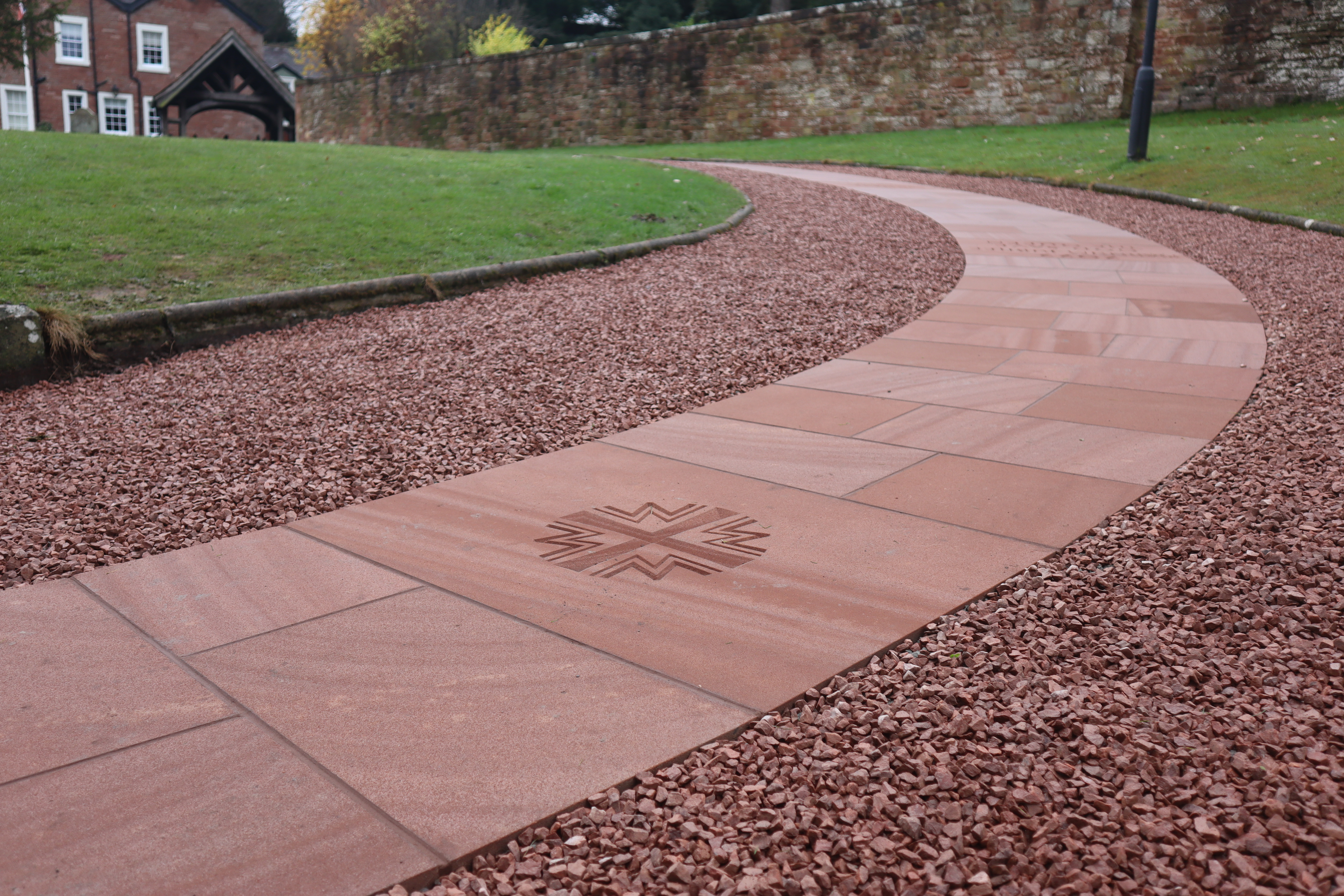
The Words on the path
Starting and ending with the Wetheral Star
1stC Jesus: God saves
The name Jesus means 'God saves'. The Star of Bethlehem led the wise to welcome the Christ Child, who came out of love for this world.
7thC Cuthbert Caring
Records tell us Saint Cuthbert, the Bishop of Lindisfarne was in Carlisle in 687AD and visited a local ‘monastery’. At the time we do not have a record of a monastery in Wetheral– but there may well have been a gathering of Christians, as witnessed by the remains of an ancient Wetheral Cross discovered in the church grounds. There is also a local well ascribed to Cuthbert. This may not be THE place he was, but it is A place where we remember his care for the people.
8thC Constantine Praying
The history of this name in this location is uncertain, however there was a northern Constantine who was the King of Strathclyde. He eventually stepped aside from his royal throne to became a Celtic evangelist, travelling far and wide with the Christian message of hope and love. A local cave along the River Eden is named St Constantine’s Cells (caves) where later, Christian monks may have stored their possessions from marauders or simply prayed. The church is named ‘Holy Trinity and St Constantine, Wetheral with Warwick.
9thC Monks Worshipping
If Cuthbert did visit this location and Constantine brought the message here, then there may well have been a community of Christians in this place. The path refers to them as monks in the widest sense; people who dedicate themselves to serve others and worship God; this would be the same for all who follow Christ.
12thC Priory: Seeking God
The Wetheral Benedictine Priory was founded in 1106AD from its mother house in York. One of the dominant themes in Benedictine spirituality is ‘Seeking God’.
13thC Font: Choosing God
The 13thC font is eight sided, often representing the 8th day – Resurrection Day. The font is a place where people are asked questions about following Jesus. Jesus called his disciples in Galilee to ‘Come. Follow me’. They chose to follow and the question comes down the corridors of time to now too.
16thC Church: Meeting God
Although the original use of the word ‘church’ referred to a group of people we usually use the word to refer to a building where the people gather. We can meet God anywhere and everywhere but we meet God together when we congregate here. The church building covers the period from 13thC to 21stC, but the main section is 16thC. Note how the tower (18thC) reflects the font with eight sides, pointing to eternal life.
2022 Platinum Jubilee: God save the Queen
The path ends with 2022 the year of Platinum Jubilee for Queen Elizabeth II. King Charles III wrote to say that he was ‘Interested and glad to know of this special project’.
The Queen once wrote,
‘Each day is a new beginning,
I know that the only way to live my life
is to try to do what is right,
to take the long view,
to give of my best
in all that the day brings,
and to put my trust in God.’
We commissioned the path with this Celtic Blessing
‘The Path’
God bless the path on which you go
God bless the earth beneath your feet
God bless your destination.
God be a smooth way before you
A guiding star above you
A keen eye behind you
This day, this night, and forever.
God be with you whatever you pass
Jesus be with you whatever you climb
Spirit be with you wherever you stay.
God be with you at each stop and each sea
At each lying down and each rising up
In the trough of the waves, on the crest of the billows.
Each step of the journey you take.
Celtic Blessings, Prayers for Everyday Life,
compiled by Ray Simpson (Loyola Press 1999)
Pip Hall wrote these words for the commissioning talk
I was very pleased to be invited to design and carve the lettering for this substantial Jubilee celebration piece. The succinct phrases devised by Rev Graeme Skinner form a striking sequence which I considered would be best expressed with hand-drawn lettering. It was a pleasure to work with Graeme and we had productive discussions about design details, with his wife Philippa contributing too.
The letterforms are ones I have been exploring for many years. They are inspired by ancient lettering I found in churches in Italy as a student, where variations in size, nesting, stacking, linking and joining of letters were used as devices for recreating prayers in decorative friezes. The forms were treated as an intricate arrangement of constructed shapes and spaces, and the effect was of slowing down one's reading of sacred texts to a contemplative pace.
Sometimes the words were almost obscured by the designs and it appealed to me that the requirement of the reader to work out the meaning was in fact intentional. This was architectural lettering not as signage but as a means of devotional engagement with the congregation, in imparting the mysteries of the word of God.
I have found the principles of this style infinitely adaptable in my work, and indeed have since discovered elements of it in many old inscriptional stones more locally - in churchyards, on buildings and milestones (there are many 2000-year old examples at the Senhouse Museum, where the technique was primarily a space saving device).
However, it's the original ecclesiastical association that still resonates with me, and therefore suggested itself as a suitable route to follow for the Jubilee stones. In these designs I have aimed at clarity of reading, and balance of form and space on the stone slabs, to achieve unity and connection between the inscriptions along the pathway. The v-cut carving is deep, allowing the reflecting of light and casting of shadows to provide maximum readability.
My designs were carved mainly by lettercarver Wayne Hart. I broke my wrist (while gardening, not carving!) shortly after I had started work on the Jubilee Path stones, and so Wayne very nobly came to help me meet the deadline, and carved seven of the ten stones before I was able to resume work. He had completed his apprenticeship training with me ten years ago, and has since assisted me on large projects.
A more detailed explanation of the pattern and meaning of the engraved words
The journey through time
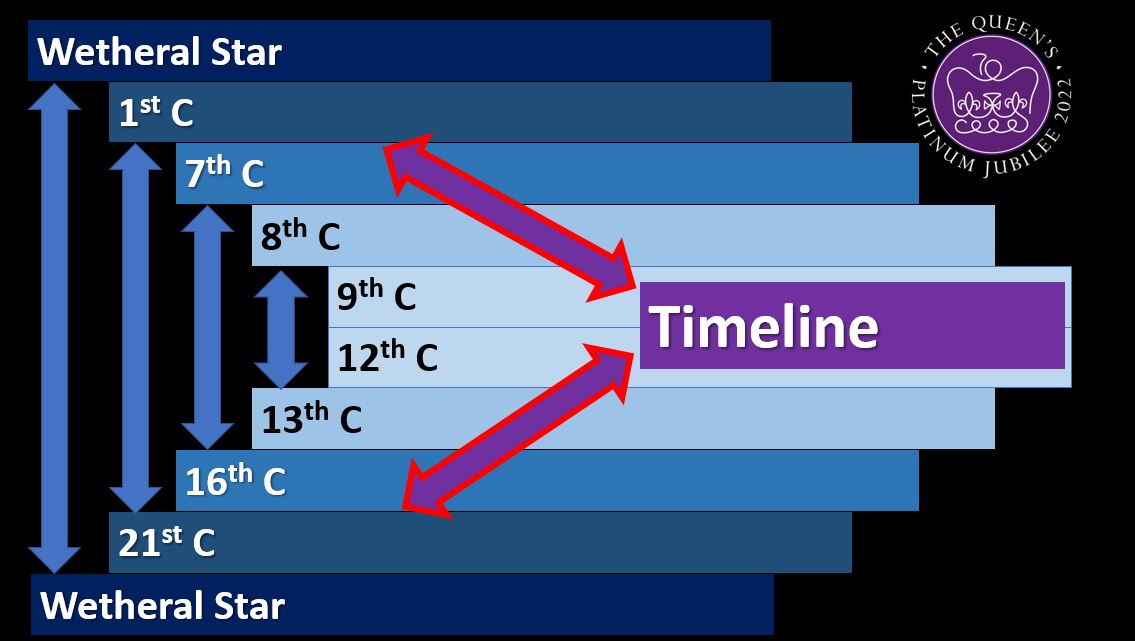
The people and places
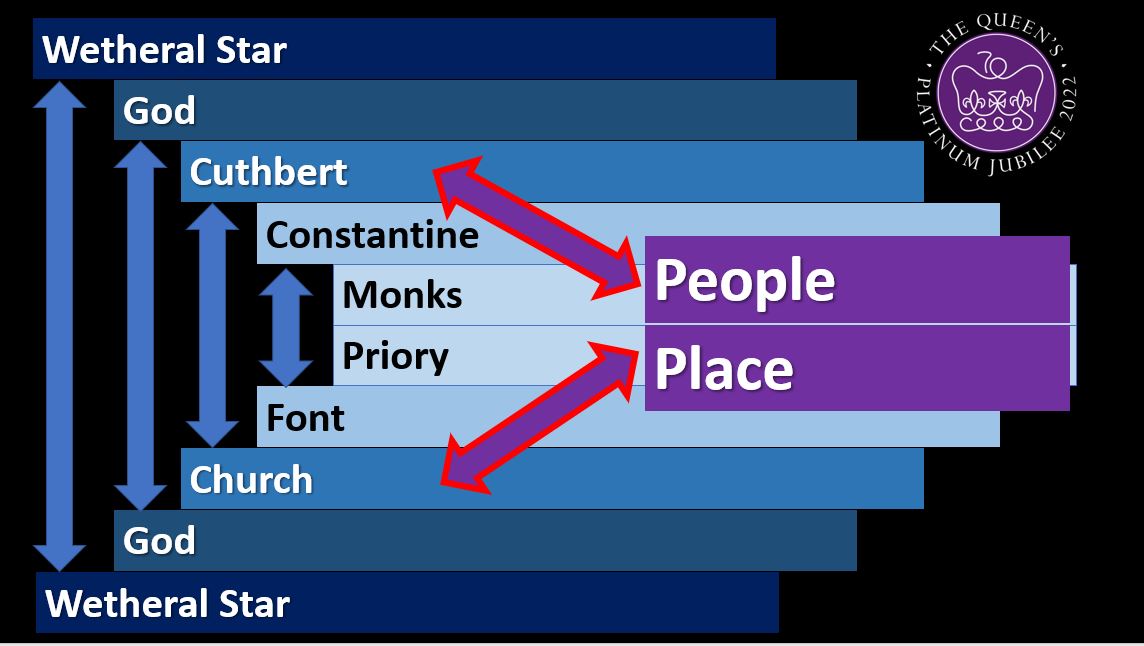
The action words of discipleship
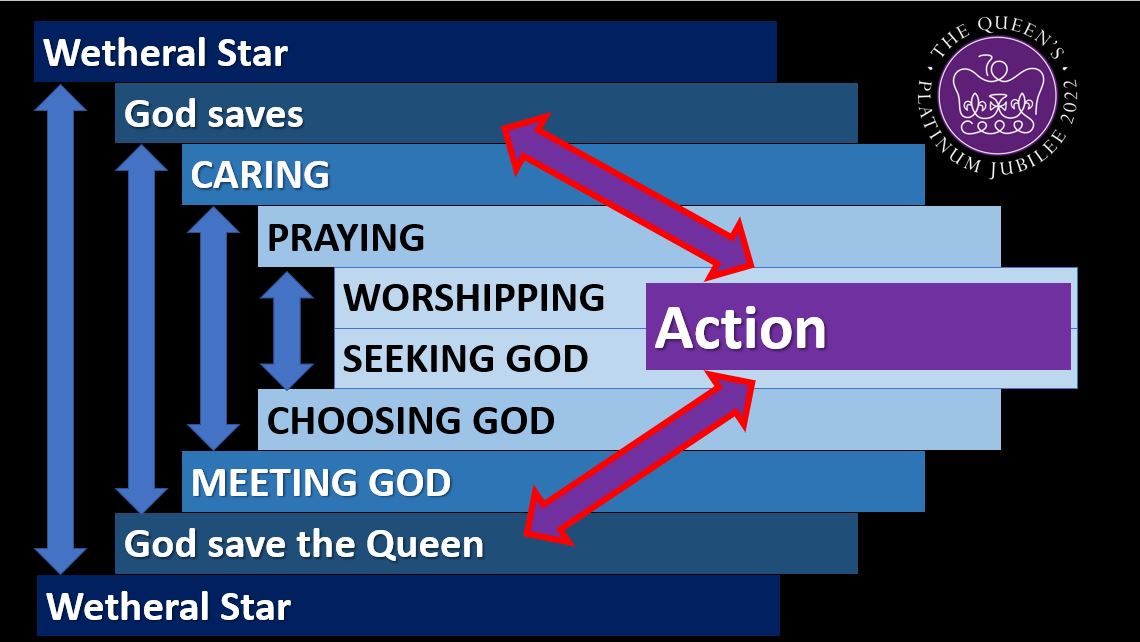
Being a disciple
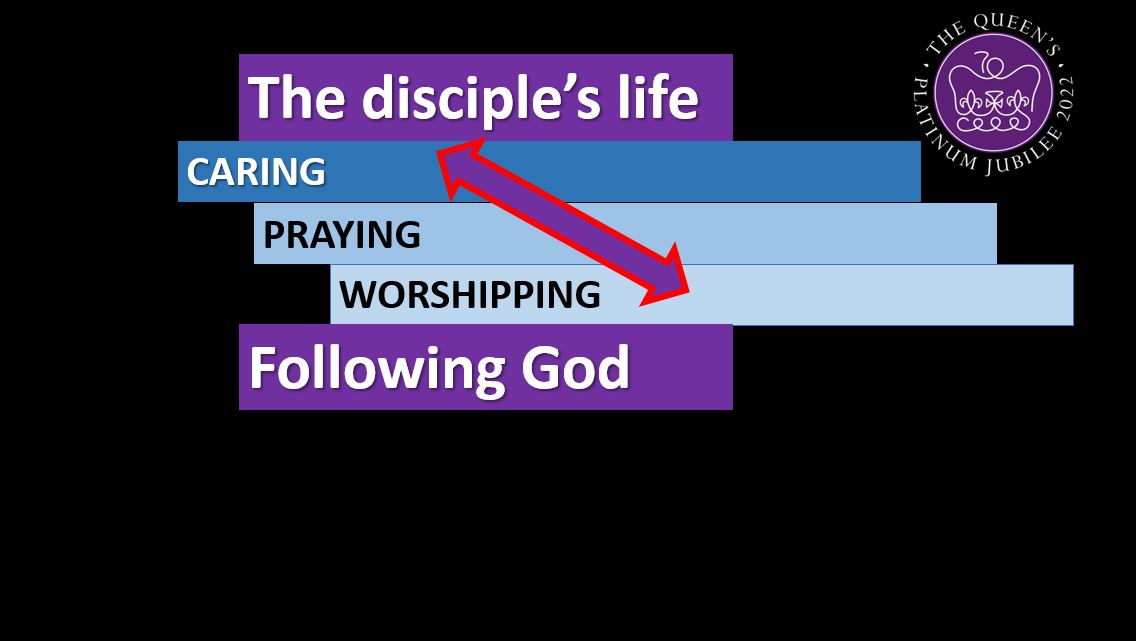
Becoming a disciple
